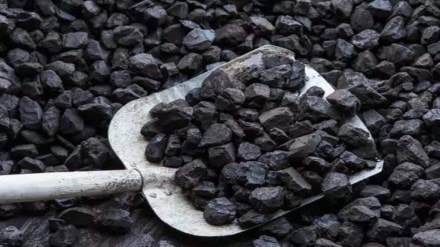India’s coal stocks, which fell to precarious levels in the first quarter of the current financial year, has improved much since. At Coal India’s pitheads, the stocks are now over 30 million tonne (mt), and a similar quantity of the fuel is stocked by power plants.
Also, CIL while keeping the pace of production, the asking rate to achieve the FY23 target of 700 mt has now fallen to 8% from 12.4% at the start of the fiscal year.
On their part, commercial coal blocks have been able to achieve a 58% production growth between April and August this fiscal.
With improvement in domestic coal supplies, state-run power producer NTPC may go slow on its fuel imports plan. While the company, the country’s largest power producer, has already contracted to import 10 mt of coal so far this year under a power ministry directive, it may import only another 2 mt of the fuel in the remainder of the fiscal, according to company sources.
However, Bloomberg reported on Friday that India was considering whether further coal imports may be needed to avoid any fresh squeeze on the nation’s power supply. Stockpiles of the fossil fuel at power plants have fallen about 11% since mid-August, meaning utilities have an average of 10 days supply, well below required levels of more than three weeks. “We are watching the situation anxiously,” the agency quoted power and renewable energy minister Raj Kumar Singh as saying.
Also Read: Govt announces first list of beneficiaries under electronics PLI
While all the CIL subsidiary companies have posted growth over last year, 37 captive and commercial blocks have come under production with 11 more new mines expected to commence production in the current fiscal. Two coal blocks, auctioned in 2021 under the commercial auction reforms, have become operational and produced 2.36 mt of coal in April-August FY 23. The 37 operational captive and commercial coal blocks include the two new coal blocks, according to the coal ministry statistics.
The 58% increase in production from captive and commercial coal blocks comes at the back the coal ministry, allowing 50% of the production to sell in the open market. “Taking up production to 43.93 mt in five months of the current fiscal from 27.85 mt produced during the last fiscal has been a humungous task since it involved re-setting mine plans, recasting strike rates and deploying additional machineries, too. This required formidable expenditure, which the captive coal miners have incurred. But the increase in production by around 58% have not helped the captive miners to go to the market with their coal since the extra production went in their own consumption,” the ministry official said.
According to industry sources, plants having captive coal blocks were not interested to increase production or make investments in their blocks until last year since sourcing coal from CIL e-auctions and even importing was more cost-effective than making additional expenditure on the mines. But this year, despite abundance of coal in the system, importing coal or sourcing it from e-auction has become a costly affair with imported coal price sky-rocketing and auctioned coal demanding premium of up to 500%.
The last CIL spot auction fetched CIL an average premium of around 480% above the notified price, 10% higher than the floor price. The coal starved non-power sector is forced to lift coal at such high prices, while captive mine owners are preferring to invest in their mines at present with a view to reap the benefit in future, a coal industry association head said without wanting to be quoted.
Although the increase in production from captive mines have not yet been able to develop a vibrant merchant market, but it is paving the way for development of such a market in the near future.
The captive and commercial coal producers have to give monthly production reports to the additional secretary and nominated authority of the coal ministry and the ministry after review in presence of the project proponents would decide on the quantity of coal that can go to the open market for sale.
This coal is generally meant of sale from e-auction platforms but so far very insignificant amount of coal has been pushed for open market operations,” the ministry official said, adding that the ministry expected the merchant market to pick up by the end of the current fiscal or at the start of the next fiscal, when captive and commercial coal miners were likely to achieve the given target of producing 141.78 mt at the fiscal end. The ministry was keeping a close watch on the developments taking place and did the required hand-holding to make captive and commercial mines operational.
CIL usually produces higher volume of coal during the second half of a financial year. Of the 700-mt target for FY23, the production split is around 44% for the H1 and 56% for the H2. “At the current pace of production, if CIL’s mining areas are not excessively affected by heavy seasonal deluge in September, the company is hopeful of reaching close to the apportioned H1 target of 306 mt,” a CIL executive said.
This would likely take CIL to its target of producing 700 mt and country to its target of producing 900 mt by the end of the fiscal.
